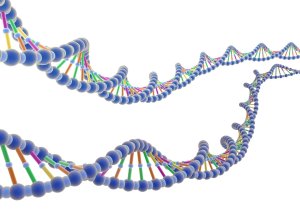The anti-dsDNA autoantibodies (dsDNA) (or double-stranded DNA) are found frequently in systemic lupus erythematosus (SLE). Their research contributes to the diagnosis and monitoring of disease.
 Indications:
Indications:
Research and monitoring of a suspected LEAD on erythema “butterfly wing”, photosensitivity, chronic non-erosive arthritis, pleurisy, pericarditis, proteinuria, hemolytic anemia.
Sample:
Venous blood clotted.
Typical values:
Sensitivity Thresholds are expressed differently according to the research method used.
Farr assay (RIA soluble phase using DNA 14C):
negative if <20 IU / mL (<20%, percentage of precipitated DNA)
Indirect immunofluorescence on Crithidia luciliae (IFCL)
negative if <1/20 (in serum dilution used)
Elisa (using microwell coated with dsDNA)
negative if <1/30 IU / mL
Interpretation:
The presence of anti-dsDNA antibodies is very characteristic of LEAD. The highest titers (> 200 IU) multisystem match the shapes and forms with kidney disease, the lowest in the articular and cutaneous forms titles. The test remains negative in drug lupus.
The antibody titer is well correlated with outbreaks of the disease: high during periods of exacerbation, falling under the influence of treatment.
Systemic lupus erythematosus (SLE)
LEAD is a systemic autoimmune disease relapsing, preferentially affecting women around 30 years.
The disease associated variously skin disorders (photosensitivity, malar, discoid lupus), a bilateral symmetric chronic arthritis, pericarditis or pleurisy, neuropsychiatric disorders, glomerulonephritis, hemolytic anemia.
The course is variable; some forms gross, are complicated by renal and neurological damage, others remain benign.
The anti-dsDNA antibodies were positive at a high rate; the presence of anti-Sm or anticardiolipin antibodies is frequent.

You must be logged in to post a comment.